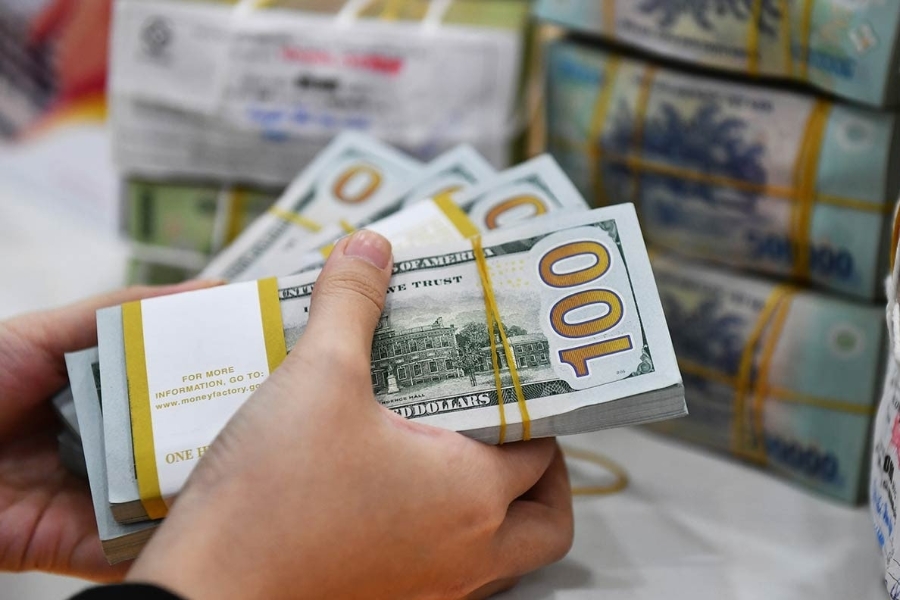The US dollar steadied on the morning of September 18 after plunging to a three-and-a-half-year low before rebounding, as traders weighed the impact of cautious comments from the US Federal Reserve (Fed) on the prospect of interest rate cuts.

The Fed cut interest rates by 0.25 percentage points on September 17, as expected, and said it would continue to reduce borrowing costs for the rest of the year. The move initially sent the dollar sharply lower, but Fed Chairman Jerome Powell called it a “risk management” measure in the face of a weakening labor market and stressed that the Fed was in no hurry to ease.
The “dot plot” chart tracking Fed policy expectations forecasts another 50 basis points of cuts at the remaining two meetings this year, but only one more rate cut in 2026. “The revised forecasts suggest a significant degree of uncertainty remains in the outlook,” said Elliot Clarke, head of international economics at Westpac. “The timing and size of the cuts also suggest that inflation risks have not disappeared.”
The dollar index against a basket of major currencies fell to 96.224 – its lowest since February 2022 – immediately after the Fed’s decision, before reversing sharply and rising as much as 0.44% on the day to 97.074. The euro was steady at $1.1818, after jumping to $1.19185 – its highest since June 2021 – in immediate reaction to the Fed’s announcement. The pound held at $1.3626, after soaring to $1.3726 on September 17.
The Bank of England is expected to announce its policy decision on September 18 and is likely to keep interest rates unchanged at 4%. Official data showed August inflation was 3.8% a year, in line with forecasts, reinforcing market expectations that further cuts are unlikely anytime soon.
In Japan, the dollar fell 0.08% to 146.815 yen after hitting a low of 145.495 yen overnight, its lowest since July 7, before rebounding sharply. The Bank of Japan is expected to hold off on raising interest rates at its meeting on September 19, although the market is still pricing in a 0.25 percentage point increase before the end of March 2026, with about a 50% chance of it happening this year.
In New Zealand, the NZD fell 0.49% to a one-week low of $0.5935 after data showed the country’s economy contracted more than expected in the second quarter. In Australia, the AUD was steady at $0.6655 ahead of the release of jobs data later in the day.
The greenback held at $1.3772 CAD after the Bank of Canada on September 17 cut interest rates by 0.25 percentage points to a three-year low, citing a weak labor market and easing underlying inflation pressures.















Leave a Reply